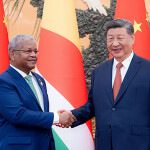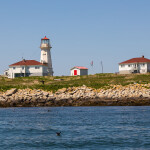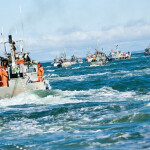Japan is bracing for much higher salmon prices due to the fallout from the deadly algal bloom in Chile, which killed millions of farmed salmon there.
The wholesale price of imported silver salmon at Tokyo’s Tsukiji market reached JPY 730 to 790 (USD 6.81 to 7.37, EUR 5.95 to 6.44) per kilogram on 25 April, the highest point in 15 months, and 20 percent up from the same time last year.
Prices have risen rapidly since the beginning of March as current production and forecasts for Chile have fallen due to a toxic algal bloom. Higher ocean temperatures in February and March led to a large generation of plankton, especially in the main salmon producing areas of Puerto Montt and Chiloe Island. In addition to killing nearly-mature fish either by oxygen depletion or poisoning, fry stocked for harvest in September and October were damaged, reducing expected production for autumn by about 10 percent.
Atlantic salmon, which could serve as a replacement, are also in general short supply, so their price will likewise increase. The recent detection of infectious salmon anemia (ISA) at an AquaChile facility in the Aysen region and continuing drug-resistant sea lice problems in Norway may restrict output. Japanese consumers prefer ocean-farmed trout and silver (Coho) salmon to Atlantics and normally take 80 percent of Chile’s Coho production. Switching to Atlantic salmon is not easy, as Japan must outbid buyers from other countries who are also buying aggressively.
Silver salmon farmed off Miyagi Prefecture in northeast Honshu Island have also seen increased substitution demand, and aquaculturalists there are looking to increase shipments. The prefecture farms about 90 percent of Japan’s domestic silver salmon. On 25 April, salted Miyagi silver salmon traded at the Tsukiji market at 810 yen (USD 7.55, EUR 6.63) per kg.
As the Coho wholesale price rise is too large to be absorbed by traders, it must be passed on consumers in higher retail prices. However, this product is usually contracted by supermarkets on three-month set-price terms, so any price hikes will be delayed. Salted sliced salmon for grilling has a strong psychological price point. Japanese eat grilled salmon as a breakfast food as Americans eat bacon, so the price-point of about 100 yen (USD 0.93, EUR 0.82) per slice is easily remembered by housewives. Increases are likely to be met with resistance and lowered demand.
Wild caught salmon from Hokkaido and Russia will come in the late summer and fall, but even then, not in great numbers, as the Japanese and Russian governments have agreed that Japan’s quota for Russian-spawned salmon and trout in Japan’s exclusive economic zone (EEZ) will be 2,050 metric tons in 2016, continuing the amount agreed to in 2015. Japan will pay Russia between JPY 264 to 300 million (USD 2.45 to 2.79 million, EUR 2.16 to 2.45 million) depending on actual catches. Japan and Russia have agreed that salmon and trout belong to the country with the river in which the eggs were laid and the two countries set annual quotas of Russian salmon and trout for Japanese fishermen within Japan's exclusive zone as well as in the Russian zone. Russia also banned drift-net fishing in its EEZ from January 2016, which will hit Japan especially hard, as much of the drift net fishery was conducted by Japanese vessels. The measure was lauded by environmentalists, but painted by others as retaliation for Ukraine-related sanctions.
Alaska salmon catches, meanwhile, may be adversely affected by a nutrient-poor “blob” of warm water in the North Pacific.
It appears that the Japanese will end up either paying more for their salmon or eat bacon instead.






